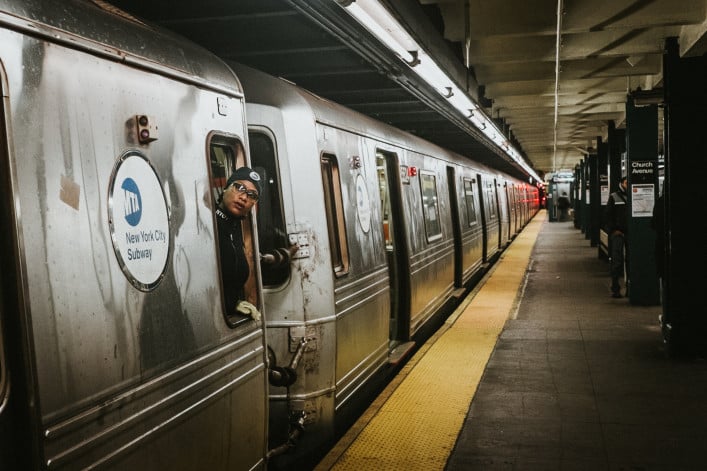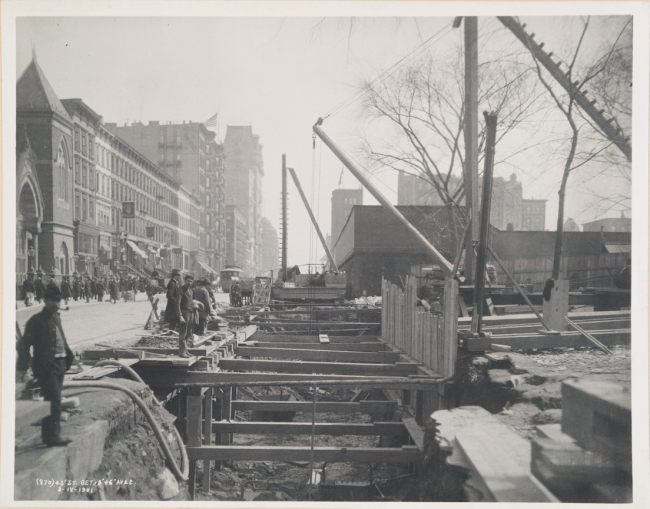Do NYC's subways ever get cleaned?
New York City is a standout for offering 24/7 public transit service, and its perpetually-running subway system is likely the planet's most extensive. (According to urban transit site Metrobits, cities like Chicago, Sydney, and London also offer transportation at all hours, but only on segments of their networks.)
While all-hours subways and buses are a definite boon to New Yorkers, whether they're partying late or working the graveyard shift, they also might find themselves wondering: If the system never stops running, does it ever get cleaned?
Those who live at subway stops at the end of the lines have likely seen MTA workers come through with brooms and dustpans. But with daily ridership at 5.7 million, it seems like trains could probably use a thorough bleaching, too.
And how: New York reported that when one local decided to swipe subway poles and see what microorganisms turned up, he found everything from ordinary mold to Staphylococcus aureus, a bacteria that can cause skin infections and food poisoning. And when scientists took samples from subway stations, the Wall Street Journal writes, they found 114 unique bacteria—including strains associated with meningitis and urinary tract infections—at the Times Square station alone.
Apparently, late at night, the MTA is making an effort to stave off those colonies of potentially hazardous pathogens. A writer from Untapped Cities found themselves on the Canal Street A/C/E platform late one night while agency employees were giving it a good wash, using high-powered water cannons.
Much of the platform grime then ended up on the subway tracks, where, as any regular commuter knows, track fires from accummulated trash are all too common. Per a report from WNYC, the MTA has a stated goal of tidying up the tracks every three weeks, using a combination of cleaning crews and trains with vacuum systems that suck up garbage as they pass over it. But in 2014, it fell far short at many of the city's 469 stations. (The 138th 4/5 train station wasn't cleaned at all from July 2013 to 2014.) Gothamist attributes this to the fact that those vacuum trains are not unlike regular passenger trains in that they frequently break down; when they are up and running, they can only clean one-third of a track at a time, due to their design.
At least most of us will never come directly in contact with whatever unhygienic horrors lurk with the track beds. On the subway cars themselves, though, we are up close and personal with those strains of e. coli and staphylococcus. But they're not quite as foul as one might suspect: The most recent subway report card from the Straphangers' Campaign rated an impressive 93 percent of subway cars as "clean," based on official transit data; the 7 line was ranked the cleanest, with 99 percent of its cars passing muster, while the Q was the dirtiest, with only 15 percent of its cars deemed clean.
Previously, a "shmutz" study by the Straphangers Campaign looked specifically at the cleanliness issue, using naked-eye observations of floors and seats in 100 subway cars on each of the city's train lines. Upon this more targeted inspection, the results were less flattering, with only 42 percent of the cars it looked at judged clean.
So what goes into cleaning cars? Aside from the usual sweeping that subways get when they reach the terminal point on the line, the MTA has protocols in place for when there might be hazardous waste (think bodily fluids) present in a car. After the city's Ebola scare in 2014, the Huffington Post wrote that cleaning crews are trained to deal with such threats to public health, and will wear protective gear and use a bleach solution to disinfect cars. (The MTA also isolates the train or bus where such waste is found, which creates delays on the line, of course, but seems like a better option than exposing passengers.)
More thorough cleaning takes place when trains are sent to one of the city's 24 rail yards, also the sites of maintenance and repairs. A spokesperson for the MTA, when contacted for comment, explained that subway cars are given a lighter cleaning daily, and a deep cleaning every quarter. Not thorough enough for you? Reassure yourself by keeping in mind that an ultra-clean environment, per The Daily Mail, can actually be bad for you, so perhaps the subway system—and its abundance of microorganisms—is doing your immune system a favor.
You Might Also Like


























